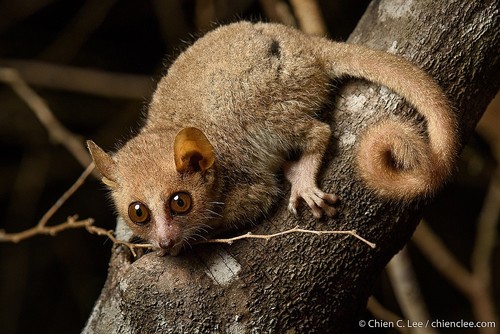
Gray Mouse Lemur
The gray mouse lemur, native to Madagascar, is a nocturnal marvel with its large, expressive eyes and bushy tail. This tiny primate thrives in treetops, playing a vital role in seed dispersal. Its solitary nature and agile movements make it a fascinating subject of study in biodiversity hotspots.
3-8 years
Lifespan
58.0 - 67.0 g
Weight
Length: 25 - 28 cm
Size
Brown, Grey, Black, White
Color
20 mph
Top Speed
Least Concern
Conservation Status
Decreasing
Population Trend
Characteristics
Microcebus murinus, commonly known as the gray mouse lemur, is a small primate endemic to Madagascar. It has large eyes adapted for nocturnal vision, a bushy tail for balance, and a gray-brown fur coat. These lemurs are arboreal and lead a solitary lifestyle, feeding primarily on fruits, insects, and small vertebrates.
Distribution Range of the Gray Mouse Lemur
Microcebus murinus, commonly known as the gray mouse lemur, is native to Madagascar. This species is found predominantly in the western, southern, and eastern parts of the island.
Gray Mouse Lemur's Habitat
Environmental Conditions
The gray mouse lemur inhabits a range of forest types including dry deciduous forests, spiny forests, and humid evergreen forests. These areas typically experience a tropical climate with distinct wet and dry seasons. The dry deciduous forests are characterized by seasonal leaf shedding, while the spiny forests consist of drought-resistant plants adapted to arid conditions. Humid evergreen forests are lush and dense with consistent rainfall throughout the year.
Ecological Niche
Microcebus murinus is a nocturnal and arboreal species, meaning it is active at night and primarily lives in trees. It plays a crucial role in the ecosystem as a pollinator and seed disperser. The species feeds on a varied diet consisting of fruits, insects, flowers, and nectar. Its ability to adapt to different forest environments across Madagascar highlights its ecological versatility.
Copyright @ Nature Style Limited. All Rights Reserved.
 English
English